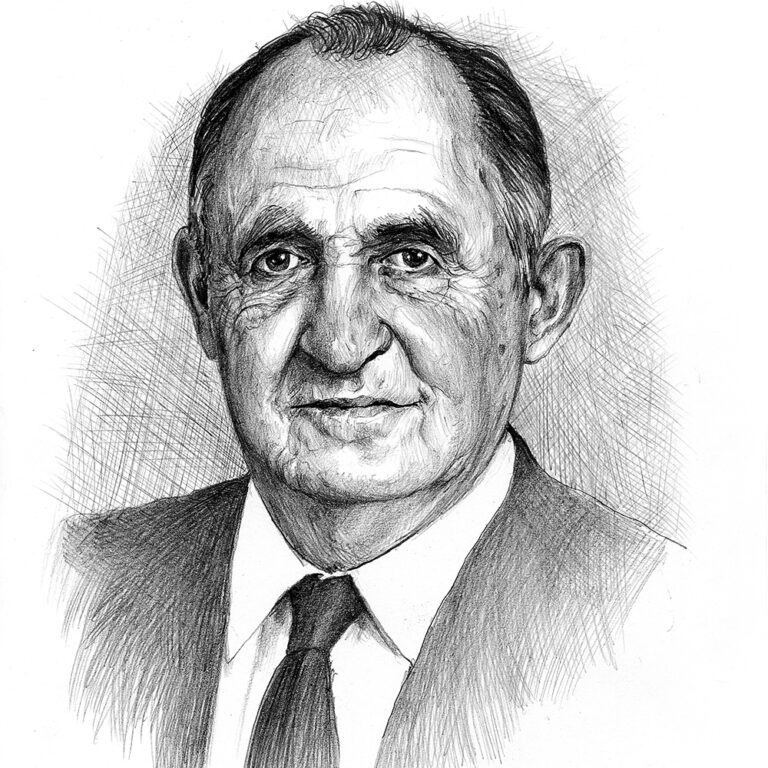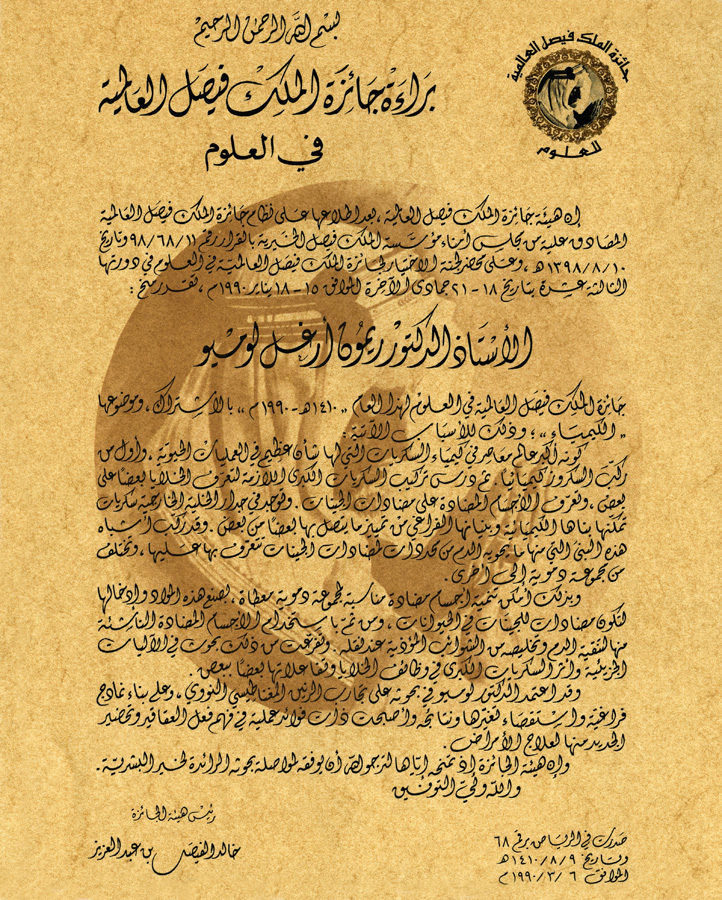

Professor Raymond U. Lemieux
King Faisal Prize in Science 1990 Laureate
Topic: "Chemistry "
The urge for knowledge concerned with living organisms became compelling, which convinced me to become major in the field of carbohydrate chemistry

Raymond U. Lemieux obtained a B.Sc. (Honors) in chemistry from the University of Alberta and a Ph.D. in organic chemistry from McGill University, followed by a postdoctoral scholarship at Ohio State University, where he conducted research on the structure of streptomycin.
After his return to Canada, he briefly held a research position at the University of Saskatchewan before moving to the National Research Council’s Prairie Regional Laboratory in Saskatoon as a senior research officer in 1949, where he completed the first chemical synthesis of sucrose. In 1954, he joined the University of Ottawa, where he established the Department of Chemistry and helped establish the Faculty of Pure and Applied Sciences. During his tenure in Ottawa, he pioneered the application of nuclear magnetic resonance spectroscopy to the structure elucidation of natural products. In 1961, he moved to the University of Alberta in Edmonton, where his research focused on the special bonding properties termed “anomeric effects” and how these controlled the chemical reactions and shapes of carbohydrate molecules. This work led to the first chemical syntheses of the complex carbohydrates found on human cell surfaces (e.g., antigenic determinants of blood groups and subgroups) and to an understanding of how the shapes of these molecules control their function. He also developed ways to produce semi-synthetic antibodies, rubber-related compounds and heavy water. Upon his retirement in 1985, he became a Professor Emeritus at the University of Alberta.
He received numerous awards, including the Izaak Walton Killam Award, Canadian Medical Association Medal of Honor, and the Gairdner Foundation International Award.
In 1990, the American Chemical Society published his memoirs titled: Explorations with Sugars: How Sweet it Was.
This biography was written in the year the prize was awarded.
- He received many awards and honors including:
- Canada Gold Medal for Science and Engineering in 1991.
- Albert Einstein World Award in Science in 1992.
- Companionship of the Order of Canada in 1994.
- Wolf Prize in Chemistry in 1999.
- Professor Raymond U. Lemieux passed away in Edmonton on 22/7/2000.



